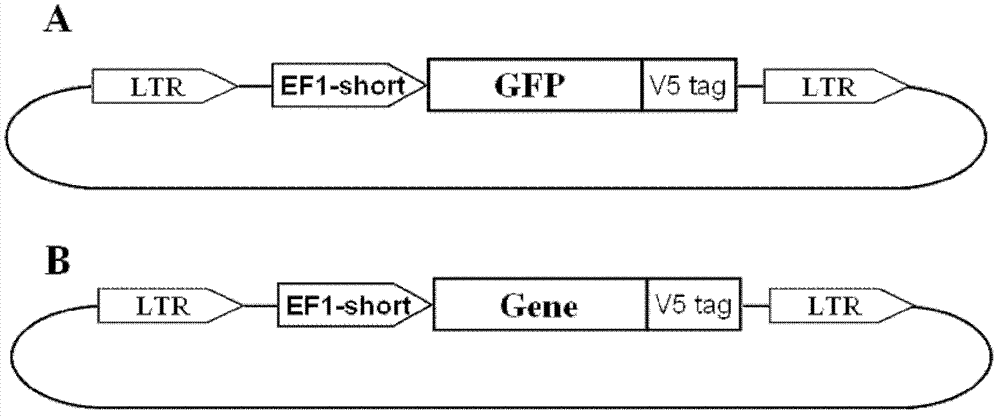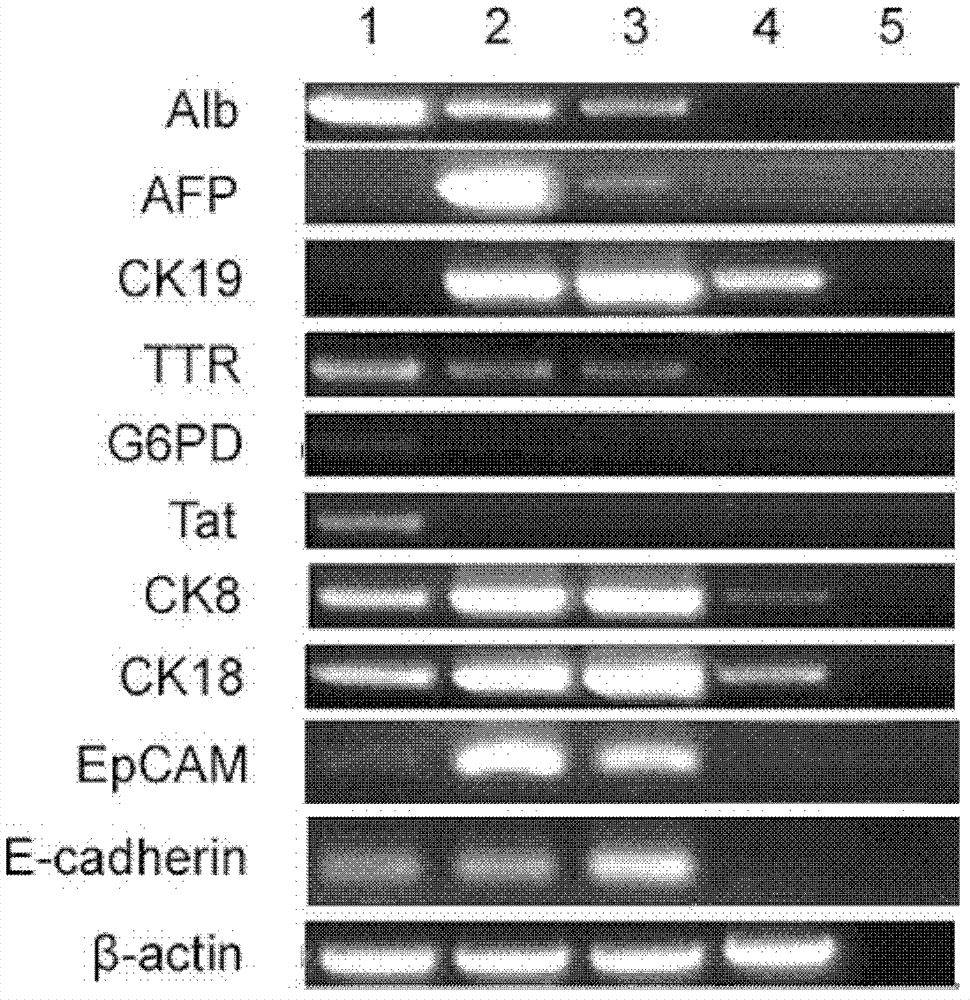Method for transdifferentiation of fibroblasts into hepatic stem cells
A technology of fibroblasts and hepatic stem cells, applied in the field of transdifferentiation of fibroblasts into hepatic stem cells
- Summary
- Abstract
- Description
- Claims
- Application Information
AI Technical Summary
Problems solved by technology
Method used
Image
Examples
Embodiment 1
[0072] Example 1: Transdifferentiation of fibroblasts into hepatic stem cells
[0073] 1. Construction of c-Jun, Foxa2, Hnf1β lentiviral vectors
[0074] Cloning primers were designed for c-Jun (NCBI Reference Sequence: NM_010591.2), Foxa2 (NCBI Reference Sequence: NM_010446.2), Hnf1β (NCBI Reference Sequence: NM 009330.2), and synthesized by Shanghai Sangon Bioengineering Co., Ltd. BamH1 and Sal1 restriction sites were introduced at both ends of the forward and reverse primers respectively, and Kozak sequence (GCCACC) was added before the start codon of the forward primer. Since each gene is expressed in fusion with V5tag, the downstream primer removes the stop codon of the gene itself. The cloning primers are listed in Table 1:
[0075] Table 1: Cloning Primers
[0076]
[0077] Using fetal liver cDNA of mouse E12.5 days as a template, PCR method was used to amplify target gene fragments respectively. The PCR reaction system was 50 μl, containing 1 μl of upstream and d...
Embodiment 2
[0097] Example 2: Identification of Morphological Characteristics and Biological Characteristics of Induced Hepatic Stem Cells (iHSC)
[0098] (1) Morphological characteristics of iHSC under light microscope
[0099] The diameter of iHSC is about 10 μm, the nucleus is large, and there are 2 to 4 obvious nucleoli in the nucleus. When cultured at low density, the cells are triangular; after growing into sheets, they are closely arranged like "paving stones" and uniform in shape, which is a typical epithelial cell ( figure 2 B). In in vitro culture, the morphological characteristics of iHSC indicate that the cell line is a relatively primitive epithelial cell line, which can be continuously passaged with vigorous proliferation ability, and there is contact inhibition between cells, and no cascading growth will occur, indicating that iHSC is not malignant cells.
[0100] (2) RT-PCR detection of molecular phenotype of iHSC cells
[0101] Extract the total RNA of the 4th passag...
PUM
 Login to View More
Login to View More Abstract
Description
Claims
Application Information
 Login to View More
Login to View More - R&D
- Intellectual Property
- Life Sciences
- Materials
- Tech Scout
- Unparalleled Data Quality
- Higher Quality Content
- 60% Fewer Hallucinations
Browse by: Latest US Patents, China's latest patents, Technical Efficacy Thesaurus, Application Domain, Technology Topic, Popular Technical Reports.
© 2025 PatSnap. All rights reserved.Legal|Privacy policy|Modern Slavery Act Transparency Statement|Sitemap|About US| Contact US: help@patsnap.com



